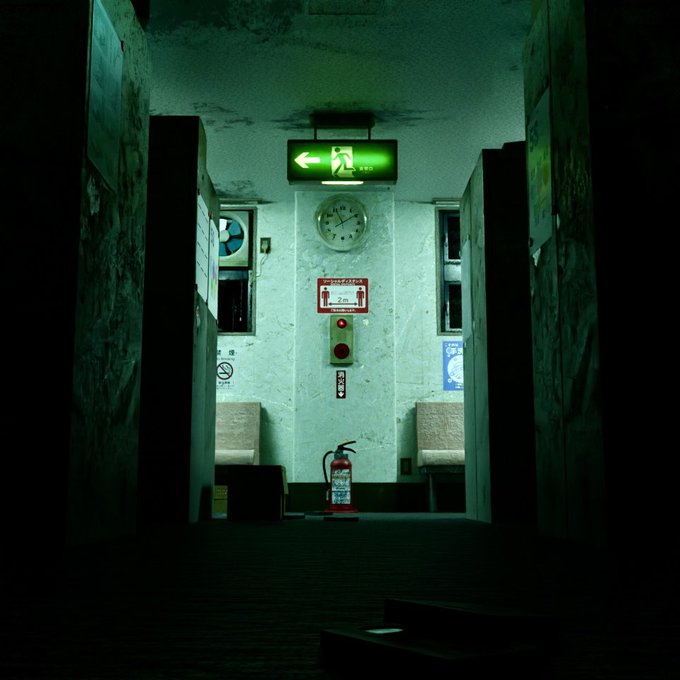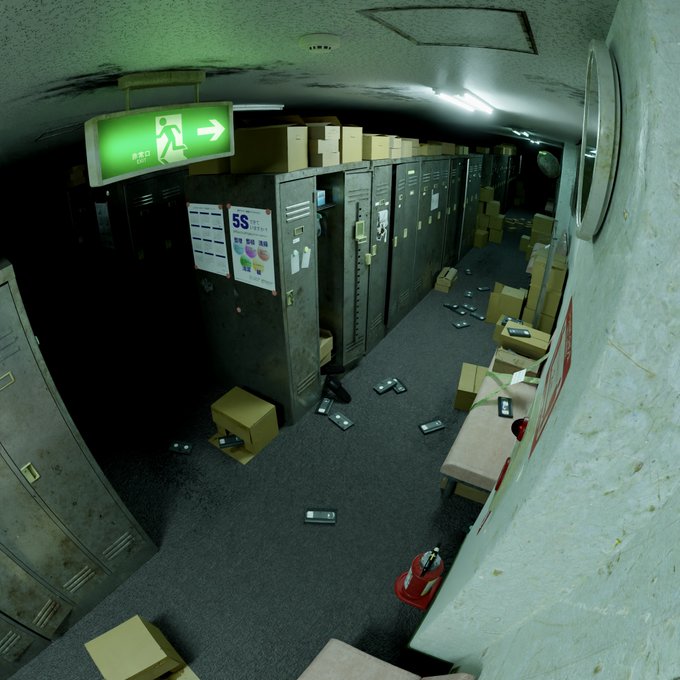

Kakeru Taira is a CGI artist who primarily uses Twitter to showcase his work. He creates arresting, realistic landscapes that evoke a feeling of unease, as if something sinister is about to unfold there. Taira has been steadily gaining fans since posting a series of 3D imagery starting at the end of last year. A year hasn’t even passed since he started making his original 3D models after teaching himself the know-how. We spoke to him about what goes on behind his creations.

Kakeru Taira
Kakeru Taira was born in Iwate in 1994. He started posting illustrations online after he quit his previous job. After drawing pointillist drawings and illustrations of women, he began creating 3D models using Blender, starting in December 2021. He currently creates 3D imagery of eerie spaces.
Twitter:@taira__kakeru
Instagram:@taira_kakeru
Picking up CGI while looking for a job

–Can you introduce yourself?
Kakeru Taira: I’m a 27-year-old living in Iwate prefecture. I’ve enjoyed using my hands since I was a student, and I used to draw and play the guitar. After that, I worked part-time at a CD shop and worked behind the scenes in e-commerce. I’m currently looking for a job. I started posting my illustrations and CGI landscapes on social media because I wanted to do something I liked while I still had the time.
–What prompted you to start making CGI?
Taira: I used to draw illustrations based on the theme of women, but I couldn’t think of what to draw for a long time because my skill level limited me. That’s when I switched over to CGI. The catalyst was when I discovered that manga master Inio Asano uses Blender, a 3D modeling software, to create the background for his mangas. I became his fan after discovering Solanin since I liked playing the guitar. I started using Blender because I naively thought I could have a job like him, someone I admire, once I practiced using the software. It’s been ten months since I started making CGI landscapes.
–What kind of software is Blender?
Taira: The selling point is that it’s free and open for anyone to use. Aside from 3D modeling, you can edit videos and use VFX technology to create live-action content. I learned how to use it on my own because there are many tutorials on YouTube.
I first made an air conditioner condenser, in which I pasted a real photo to add texture and patterns to the model’s surface. You can create hyper-realistic imagery quite easily, so I still use the same method with objects in the landscapes I make.
–How did you establish your style of making eerie landscapes?
Taira: My second or third 3D model was of a laundromat; I felt realistic depictions would get the most attention on Twitter. I was looking for a good angle and landed on an overlooking point of view, like a security camera in the top corner. I added meticulous details, like the setting and placement of objects, and ended up with an uneasy atmosphere that makes you feel like someone is living there. There’s a reason behind how many everyday things are placed, such as windows, doors, and other things. I discovered I could stimulate the viewer’s imagination by putting something somewhere for an unclear reason.
Once I posted my work on Twitter, I got a big reaction from people. It made me feel like I could excite people by making things in that vein rather than simply pretty spaces.
I’m working toward creating imagery viewers could carefully observe by leaving the interpretation up to them, like an obscure film. You can access different information with one click on social media, so I try to leave some space for imagination so people can sit with my work.



–What are the steps that go into your process?
Taira: First, I develop a rough theme and create necessary parts like furniture. Once I finish making a reasonable amount, I put them together to create a landscape. In many cases, things get pretty haphazard when I add objects or adjust how they’re placed. I take time to make minor adjustments because I want the objects to make sense from all angles. It takes around three weeks to a month to finish one landscape, even if I work ten hours daily.
–Where do you get inspiration from?
Taira: I get a lot of inspiration from films. One example is The Grand Budapest Hotel, a comedy film by Wes Anderson set in the best hotel in Europe. The film has many symmetric compositions, and I believe it has cultivated my understanding and way of formatting landscapes.
I love it when I see an unfamiliar city in films, as it makes me excited. I’m figuring out how to evoke that same feeling in others through my work.
Leaving behind a sense of unease for the viewer


–The way you place different objects feel so true to life. How do you decide on the placement?
Taira: I usually look up photos to get an understanding of a particular place’s layout and solidify the composition, or I create a model of a real place. It seemed like the standard for laundromats was to have benches between washing machines, so I incorporated them into my work. The 3D apartment I posted after the laundromat one was modeled after an apartment I actually lived in. The room had a unique atmosphere; it was damp, so much so that it would get moldy without ventilation. I came up with the resident’s personality and put in details such as garbage bags and condiments at the entrance to make it look realistic.
I also have an artwork modeled after underground public lockers in Ikebukuro station. The placement of the lockers and photobooth are accurate, but I added the public phone and garbage can. I often rearrange real places too.


–Do you have any rules when you create CGI?
Taira: I leave a sense of unease for the viewer. I incorporate elements that make the viewer conjure a story, like leaving dirty dishes out and adding a clock to include the detail of time.
Once I’m done with a landscape, I litter the place. When I do that, I always consider people’s movements. For instance, receipts get tossed to the side at public lockers because people walk in the middle. A landscape can look unnatural all of a sudden, depending on the way a space is cluttered, so it’s something I take seriously.
–You work for ten hours a day; what motivates you to do it?
Taira: I have more time than others because I’m in between jobs, so I want to use as much time as possible to create imagery. Many CGI artists on social media range from students to people in their early twenties, but I don’t want to feel defeated by them.
–What’s your goal?
Taira: I eventually want to try creating fantastical things. People have started paying attention to photogrammetry, a technology in which people can easily take photos and generate CGI models. Once that becomes the norm, my realistic style won’t be rare anymore, which is why I want to explore a style that has both realistic and fantastical elements.
I won’t be able to convey a fantastical world if the details are inconsistent, so I want to hone my modeling skills and make more realistic imagery. I hope I can eventually take on CGI jobs.
Translation Lena Grace Suda
